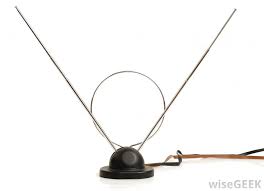For many, who switched to cable and satellite services with thousands of channels, no big deal. But for some, who still jiggle rabbit ear antennas, the switch is a problem, forcing them to replace their televisions, subscribe to cable service they may not be able to afford, or buy and install a converter box using a government coupon. The people most affected by the change are often elderly, disabled, on fixed incomes or from non-English speaking households.
KQED Interview with Tracy Rosenberg
Studies show that a majority of the population still gets news and information from their television sets. To avoid blacking out some of the most vulnerable, a large-scale effort is needed. The Federal Communications Commission has recognized this; calling the preparation for digital television “their most important priority for the next six months”. The commissioners are fanning out to 50 cities and will be in the Bay Area this week. Organizations that work with the elderly, the disabled, and lower-income communities should come to sessions so they can guide their clients and constituencies. Events will be held at the Geen Mun Community Center at 777 Stockton Street at 10:30am on September 11th, the Mission Neighborhood Center at 362 Capp Street at 3:00pm the same day and at the Asian Cultural Center in Oakland at 388 Ninth Street in Oakland at 7:00pm on September 10th, all featuring Democratic commissioner Jonathan Adelstein.
This is a great start, but more needs to be done. The Federal Government has allocated 20 million dollars, but this amount is a mere fraction of what the United Kingdom spent when they moved to digital television. We’d like to see community centers equipped as voucher clearinghouses, with teams coordinated to assist the elderly or disabled to get their coupons, purchase the boxes, and install them in people’s homes. We’d like a big retailer like Target or Wal-Mart or Best Buy pledge to sell the converter boxes at the coupon rate of $40 instead of the current retail rates of $50-70, which takes a little extra money out of people’s pockets.
Like a 71-year-old Berkeley resident I spoke to yesterday. Retired and living on a fixed income, he told me he “can’t afford to increase his monthly expenses, uses a pay as you go cell phone for emergencies only and can’t pay for a gazillion channels of junk of cable”. He says “If the government is going to mandate that TV signals go out. And the airwaves belong to the public and operate in the public interest, than how are people who aren’t working or have to stay at home due to illness supposed to deal with this? It’s a fairness issue and a civil rights issue”.
But there’s more to the story. After the transition is complete, all the old analog channels will be vacant, along with the side bands between the old channels (referred to as “white spaces” and still visible on analog TV’s as the snowy frequencies between broadcasts). What will happen to them? If big broadcasting has its way, than they’ll be auctioned off and licensed for yet more additions to the dizzying array of special interest cable and satellite offerings, joining hundreds of golf and cooking channels. But a coalition of media reform groups and some Internet companies like Google are envisioning a new model. If these powerful pieces of spectrum remain unlicensed, then they’ll be available for the development of faster broadband, including wireless connections at a speed and strength never before possible, that can cross trees and buildings and mountains, and catapult America from 15th position in world broadband speed into the top 5. It’s a priceless opportunity to connect America as once rabbit ear antennas connected us to a fireside chat. We can’t afford to waste it.
Tracy Rosenberg is the director of Media Alliance.

